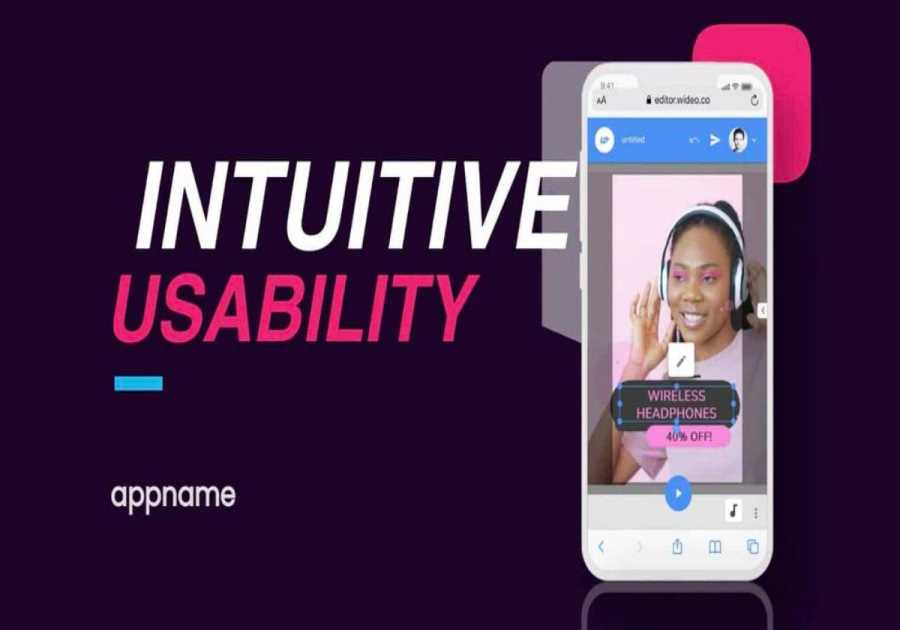
Anyone with a smartphone can start creating videos – but to produce something valuable, easy-to-follow and informative, you need to learn some tricks of the trade.
When the time comes to create training videos for your business, it’s a good idea to invest in the right equipment, spend time planning your videos and work on your presentation skills.
For all the inside info on how to create professional and polished training videos, we chatted with XayLi Barclay, a visual coach and founder of the hugely successful Thinkific academy Start Shoot Grow. A speaker at our Think in Color 2021 event, Xayli specializes in teaching course creators how to stand out online and attract the right people.
Read on for your guide to how to create training videos – including Xayli’s equipment tips, real-life examples and top do’s and don’ts.
[TAG2]Why create training videos
Training videos are one of the most effective ways to teach information to students online. They’re ideal for self-study as students can move through each video at their own pace.
Training videos also make the learning experience more dynamic – and a lot less daunting for students. Instead of dry text or undecipherable graphics, a video takes you step-by-step through a topic.
As Xayli explains, a training video is like having someone next to you explaining what you need to know about a topic and guiding you through the learning journey.
The best videos are clear, engaging and even fun. They make learning easy and accessible for everyone.
Other benefits of creating training videos include:
- Increased flexibility
- Higher student engagement
- Improved information retention
- Visual, dynamic learning
- Better course completion rates
As a course creator, training videos can also be one of the easiest types of content to produce for your students. Here are Xayli’s recommendations for 3 of the best types of training videos for businesses and entrepreneurs.
[TAG4]3 types of training videos for course creators
There’s a huge range of different types of videos you can create for your business – but Xayli recommends these 3 types to help you create training videos that are both engaging and entertaining.
Talking head videos
When you’re thinking about how to create training videos for your business, your mind probably goes straight to ‘talking head’ style videos.
These videos feature an expert talking in front of a camera. They follow the traditional teacher/student format that’s familiar from school and college – but you’re watching a video instead of listening to your instructor live.
These types of training videos are perfect for establishing a closer connection with your students. Instead of staring at a screen, they’re looking at your smiling face.
Though they’re one of the hardest types to create – and can involve stepping outside your comfort zone and in front of a camera – the rewards are worth it, says Xayli.
“These videos can result in much more engagement and interaction from your students, a deeper connection with you and your content, and definitely higher completion rates, which turns into more testimonials and more sales for your courses. So for me, the extra effort is really worth it,” says Xayli.
Talking head videos are ideal for:
- Establishing your expertise
- Adding personality to your videos
- Creating a connection with your customers
- Introductions and conclusions
- Thought leadership videos
Top tip: Talking head videos can be hard to follow for long videos and students might switch off if they’re just watching you talk – so mix it up by adding graphics, pop-ups, different camera angles and screen sharing elements too.
Screen sharing videos
Screen sharing videos are great for walking your students through a topic step-by-step. They’re especially well-suited to topics that have a technical element where your students will need to use a computer or phone to complete an action.
The same goes for topics where you have a process that you need to teach your students – like working out a math problem or designing a piece of furniture. Screen sharing makes it super easy to teach this type of content as they can watch you complete the process in real-time.
Screen sharing is also one of the easiest ways to create training videos for your course. All you need is a microphone and your screen. You don’t need to worry about lighting or camera angles – it’s just a basic screen recording.
This style of training video is best for:
- How-to videos
- Demo videos
- Tutorials
Use screen sharing to show your students exactly how something is done step-by-step.
Presentation videos
If you’re looking to create training videos for the first time, presentation style videos are a great option. They let you convey a lot of information in a straightforward, simple way and students can read and listen at the same time.
Presentation videos let you provide students with detailed information in a format that’s easy to follow. They can see each point laid out clearly on the page – with your voice over the top explaining each concept in more detail.
Advantages of presentation style videos include:
- Break down and explain complex concepts
- Let students follow along
- Add your branding for better brand recognition
- Add charts, infographics, animations and more
Of course, you can also use a combination of all three types of training videos!
Why not introduce the topic with a talking head video, then launch into a presentation video to outline the key concepts, and switch to screen sharing to walk your students step-by-step through a certain process?
This not only creates a more dynamic learning experience, but it also makes sure that you’re using the best type of video for each section of your video content and course.
[TAG5]5 steps to create training videos that stand out
Here’s Xayli’s 5-step process for how to create training videos for your business – while keeping the process simple, stress-free and extra time efficient.
[TAG6]Map out your content
The first step to any content creation process is planning.
Before you start recording your content, it’s really important to plan your content and map out what your video will include.
This is key to stop you wasting time and energy – and it prevents you from creating videos of you rambling on and confusing your students!
Define your learning objectives
Before you start to create your training video, you need to specify exactly what your students are going to learn in each video.
What do you want your students to know after watching your video? What should they be able to do at the end of the video? How will this video fit into your course content?
Before you do anything else, define your learning objectives to give you focus when creating your content.
Break your topic into chunks
Xayli also recommends breaking your topic down into chunks to make sure your content is easy to understand and absorb for your students.
If this is your first time creating training videos, it’s a good idea to take a look at some instructional design models for help on how to structure your video content to get the best results for your students.
Plan any extra resources and activities
Before you create training videos for your course, make sure you also know which resources and extra content you will use to supplement your videos. Then you can add references to them in your script and if necessary explain any activities or group work.
If you can map out your content before you start to create training videos, you will make your life much easier – and improve the experience for your students.
Approach videos like any other type of content with a clear structure and aims so your students don’t finish your video more confused than when they started!
[TAG9]Write your script
If you’re going to create training videos for your course, it’s a good idea to write a script to guide you.
Keep it short and sweet. The aim is to provide your students with the knowledge they need and then let them go free and start using their knowledge.
Your script doesn’t need to be pages long, it just needs to explain the key concepts.
Your script also needs to include:
- An introduction of yourself and the topic
- Your core content broken down into sections
- A recap of the content covered in the lesson
- An outro or conclusion with a call-to-action (CTA)
When you’re writing your script, there are a few things to remember to keep your students hanging on your every word:
- Use your brand voice – Write your script for your target audience and keep your brand voice throughout, this is not the time to start using long words or adding in slang if you’ve never used it before. Be consistent with your brand and speak to your ideal customer in your video content.
- Read it out loud – Check that what you’ve written actually works as a script by reading your text out loud. If it sounds too wooden or too weird, edit it! Remember, you’re talking to real people, not robots.
- Be concise – When you’re writing a script, you might be tempted to add in lots of different examples and case studies, but this will quickly drive up the time stamp for your video. To give your students the best experience, keep it concise.
When you create training videos, you might also choose not to have a script and ad lib instead. This can help to give your videos a more natural feel – but it’s important to keep your content clear.
If you’re going without a script, jot down your key points before you start recording so you know what you need to cover and you keep your videos focused.
[TAG10]Record your content
The next step is recording your content – the big one!
To record your content, there are some basic tools you’ll need.
Xayli recommends this list:
- A smartphone or camera
- Microphone
- Tripod
- Softboxes
- Computer with editing software
Depending on the type of training video you’re creating, you might also need some extra tools, such as lighting for talking head videos or a digital pen tablet for writing during screen sharing videos.
Let’s take a look at our 3 types of training videos and exactly how you’ll record each one.
Recording talking head videos
The most challenging type of video content to record are talking head videos. The good news is, Xayli has a step-by-step guide for how to produce them at home.
These tips work are tailored to course creators who don’t have access to a proper studio and who are doing it alone, without professional help or with only a small team.
The basic setup for a talking head video goes like this:
- You have your camera or phone set up on a tripod
- You have lighting on both sides of your body
- You have a desk where you’ll sit or stand
- You have a microphone
- You have a wall or backdrop behind you
Camera and tripod
To record your video, you’ll need a camera and something to balance it on.
You don’t need to have a fancy camera to record talking head videos – a smartphone with a good quality camera works just fine.
The tripod lets you put your camera at the right height for your video and makes sure it is stable during the recording so your video isn’t wobbly. If you’re using a phone, use a bracket to fix it in place on the tripod.
Lighting
The lighting for your video will depend a lot on where you’re recording it. You can either use natural light or artificial light – and both have pros and cons.
“Natural light is beautiful, but not always really reliable,” says Xayli.
“I love artificial light… I’m able to keep the same consistent lighting all across the board.”
For beginners, Xayli recommends starting with artificial light and then moving to natural light once you have more experience with setting up your videos.
Artificial light is more consistent and easier to manipulate when you want to create training videos. It also gives you the freedom to record at any time of day and in any season.
For best results, buy a couple of soft boxes to make your light appear softer and more natural in your videos.
Microphone
It’s worth investing in a good microphone to make sure that any audio you record is high quality. This is important not just for talking head videos but also for screen sharing and presentation videos too.
You can choose between a desk microphone or a clip-on microphone that you attach to your clothes.
Background
“Backgrounds get me so excited because of the fact that you can create whatever you want in your background,” says Xayli.
Customize your background to reflect your brand and even your industry or course topic. You can use your background to show off your personality and make your videos seem more approachable and fun.
Just make sure that your background doesn’t interfere with your teaching, says Xayli. You don’t want to distract your students from what you have to say so keep it simple.
If you don’t have a good space for recording your videos with a background, you can also opt for green screen fabric. This lets you add whatever background you want to your videos in the editing stage.
Find out more about How To Set Up A DIY Home Video Recording Studio and our top picks for equipment here.
Recording screen sharing videos
If you’re doing a screen sharing style training video, you don’t need a camera to record your video – but you do need a program that lets you record your screen.
Xayli recommends Filmora, Loom or QuickTime for Mac to create training videos for your business.
Screen sharing videos are arguably the most straightforward videos to record. The only thing you need to remember is your formatting, says Xayli:
- Set your software to 16 x 9 – this is the universal size for all course platforms and video platforms so make sure your screen recording program is set to record in this size.
- Set your resolution to 1920 x 1080p – this is also the standard for all video platforms so double check that you have the right resolution when you’re recording and downloading your video content.
- Opt for basic settings – some platforms let you customize your frame rate and other technical details but if you want to keep it simple, just use the standard default settings they offer.
- Go slowly – though the process you’re showing your students will be easy for you, make sure you move slowly through every process so that anyone watching finds your video easy to follow.
Keep your explanations clear and clean to make sure your screen sharing videos work for your students.
Read our full guide for How to record your screen on any device for more tips.
Recording PowerPoint or presentation videos
Presentation style videos are one format that Xayli loves to create training videos for her students.
Xayli recommends using Microsoft PowerPoint or Canva to help you create training videos in this style.
Create a presentation for your topic with the key points written as bullet points on each slide – then add your voice over the top to explain the content.
Like any other type of training video, you need to make sure that your presentation is the correct size – that means 16×19 and 1920x1080p. Then simply record a screen sharing video, clicking through each slide of your presentation as you talk.
When it comes to presentation style videos, Xayli has these tips.
- Don’t make it too wordy – Make sure your presentation is clear, remember you’re adding your voice over the recording so you don’t need to put all your content on the slides.
- Use your brand colors – Keep your presentation cohesive by using your brand colors to tie in your other content.
- Add your face too – Remind your audience that you’re there and you’re still with them by adding your face somewhere on the screen as a small thumbnail.
If you’re creating presentation style videos, you can pour your creativity into your presentations to create something that’s engaging and visually interesting for your students.
Thinkific presentation videos
You can also use Thinkific to create training videos using the presentation style format.
All you need to do is upload a PDF of the presentation you’ve created in Canva or another program.
Then you simply select the slide and select record audio – a presentation recorder starts and records your voice and then you hit stop when you’re finished. Listen back to your recording and either save it or record another one. It’s as simple as that!
The other benefit of Thinkific presentation videos is the interactive element it brings to your course
“Students are able to flow through with ease…” explains Xayli. “They’re able to interact so it kind of makes sure that they’re not sleeping. They have to click the next slide, they have to click play. I like that you’re able to create a small actionable course this way, and I love how you’re able to break things up.”
Whichever program or video format you choose, you’re also going to need to edit it.
Let’s move on to step 4…
[TAG19]Edit your footage
Now you’ve got all your beautiful content filmed, it’s time to edit!
You can either edit your footage on your computer or your phone, depending on your preference.
When you create training videos, you might find that editing takes the most time of all the steps – so factor this into your content schedule and make sure you have time set aside in your calendar for editing.
You don’t need to invest in expensive software for editing, especially if you’re just starting out. Check out our top editing software recommendations here.
If you’ve recorded screen sharing footage using QuickTime or Filmora, it’s really easy to edit – you can edit your recording directly in the program.
Here are some things to watch out for when editing:
- Trim your content – No matter how good your recording is, there will be some filler moments that you can cut. Trim your content to make sure no time is wasted and your video is short and to the point.
- Import audio and music – If you’ve recorded your audio separately from your video, you’ll need to import it and match it up with your visual recording. You can also add music to your intro, conclusion and transitions – just make sure it’s not copyrighted audio material.
- Add your branding – When you create training videos, it’s important to show off your brand too. This reminds people who they’re watching, makes your content more cohesive and helps to protect your intellectual property online.
If you’ve never edited a video before, check out this beginner’s guide to how to edit YouTube videos for extra help.
[TAG24]Share your video and gather feedback
The last step is to upload and share your training videos to your chosen platform.
The exact process will vary depending on where you’re hosting your training course – with Thinkific it’s done in just a few clicks. Check out our training video to see the process step-by-step.
When you upload your videos, include a way for your students to provide feedback too. Add a customer survey to your online course so that students can share their views and experience at the end of every module.
Make sure you include specific questions about your teaching style and the quality of the training videos – are they easy to follow? Do they move at the right pace? Ask your students to find out what you can be doing better.
If you can get feedback on your content, you can make sure that every time you create training videos, you’re producing the best possible resource for your students.
3 top tips to remember when you create training videos
1. Share from your heart
As a course creator, you’re sharing your expertise with your students – but you’re also sharing your personality. When you create training videos, try to be yourself and lean into your unique personality.
These people came here to see and hear from you – they might even have paid for the privilege. They want to listen to what you have to say and they’re ready and waiting to learn. If you can be yourself in front of the camera, you can give them a memorable and enjoyable learning experience.
2. Keep smiling
If you’ve ever sat in a class or lecture with a professor who’s monotone, unsmiling and dreary, you’ll know how boring some lessons can be. Save your students from the same fate by always keeping your energy upbeat.
If you’re doing a talking head video, make sure you smile at the camera, sit up straight and share your knowledge with enthusiasm. If you’re recording your voice, put your energy into your voice and make your tone energetic and inviting.
The person watching you is going to feel your energy just from watching your video. So keep smiling and share your excitement for every topic so your students can catch it too.
3. Remember nobody’s perfect
Perfection is overrated, says Xayli. We’re all human and we all start somewhere.
We’ll never be a perfect version of ourselves. What matters most is your energy and enthusiasm. When you’re creating training videos content for your courses, that’s what comes first.
So show up as your best self – but don’t worry about being perfect. Your message and your course content is what really matters most. Your students will forgive the rest.
[TAG26]3 top examples of companies creating training videos
Elizabeth Rider
A leading nutrition and whole living expert, Elizabeth Rider first started her business with a successful blog before expanding to one-to-one coaching. While this was a great way to monetize her expertise, Elizabeth was limited in the number of customers she could reach – and the revenue she could generate.
The game changed when Elizabeth started using Thinkific to create training videos.
Instead of filling up her time with calls and webinars, Elizabeth was able to pre-record her course and upload it to Thinkific for students to access whenever they wanted to.
This simple switch let Elizabeth build a seven-figure online business from scratch, using just a phone and a laptop.
The best part? It’s easy for Elizabeth to create training videos for her students – all she uses is PowerPoint and screen recording.
“People want your information”, she explains. “I think people learn really well with the PowerPoint slides and your voice because they’re reading and they’re hearing you at the same time.”
It’s a win-win for Elizabeth and her thousands of customers across the world.
Later
Ranking number 1 as the top Instagram marketing platform, Later is one brand that’s always looking for ways to improve customer success.
Later’s team used to host weekly webinars for customer onboarding. The change happened when they switched to Thinkific Plus to create training videos.
With this simple swap, Later saw a 320% increase in customer retention after creating their online course academy. They also had a 467% increase in the adoption of new features and a staggering 368% increase in the number of paid plans purchased.
The decision to create training videos changed the game for Later’s customer success team – they got wildly better results for far less effort, freeing up their time from weekly webinars to focus on other strategies.
Read the full Later case study here.
Hootsuite
With over 16 million users worldwide, Hootsuite is one of the most popular social media management platforms around. To attract new customers and aid their existing community, Hootsuite developed the Hootsuite Academy using Thinkific Plus.
The result? They’ve trained over 450,000 students in their academy and their specialist social media certification program has been completed by over 72,000 people.
By creating training videos and building a comprehensive online learning academy, Hootsuite were able to increase engagement and boost customer retention. They’re now able to educate thousands of students at the same time and adapt and update their course content whenever they need to.
Read the full Hootsuite case study here.
[TAG34]Create your own training videos today!
If you want to create training videos that stand out from the crowd, use Xayli’s recommendations to give you the confidence to get started. Let your imagination run wild to create engaging and interesting training videos that teach your course content while keeping your students entertained.
The most important thing? Don’t forget to smile!
Create Your Course
--------------------------------------------
By: Maddie Martin
Title: How to Create Training Videos
Sourced From: www.thinkific.com/blog/create-training-videos/
Published Date: 07/04/23
.
Did you miss our previous article...
https://bestbusinessblogs.com/content-marketing/where-should-you-host-your-explainer-video






